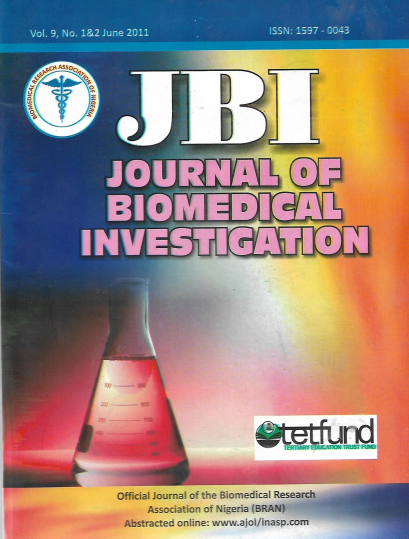PREVALENCE OF ANAEMIA AMONG CHILDREN ATTENDING A TERTIARY HEALTH FACILITY IN NORTHEASTERN NIGERIA
Abstract
Anaemia is a public health problem, particularly in Maiduguri and its environ. 120 children referred to the Haematology Department, University of Maiduguri Teaching Hospital for routine investigations were enrolled randomly and prospectively into the study. Subjects from ages 0- 14years comprising of 73 males and 47 females were investigated. Using standard methods, Haemoglobin concentration (Hb), packed cell volume (PCV), total red blood cell count (RBC), peripheral films for red cell morphology and red cell indices were carried out. Anaemia was defined according to the WHO cut-off value of Hb <11.0 g/dl. Of the 120 subjects studied, 68 were anaemic, a prevalence of 56.7% out of which, 41 (60.3%) were males while only 27 (39.7%) were females. Of the 68 anaemic subjects, 50(73.5%) were of the pre-school age group. The majority of these subjects, 83.8%, were mildly anaemic, 11.8% were moderately anaemic while only 4.4% had severe anaemia. Out of the 68 anaemic children, 19 (27.9%) showed pure features of iron deficiency anaemia, 34 (50%) showed features suggestive of haemolytic anaemia (probably malaria-induced anaemia), while only 2 (2.9%) had pure features of megaloblastic anaemia. Thirteen (19.1%) had dimorphic blood picture. The contribution of iron deficiency to childhood anaemia is therefore underscored.




